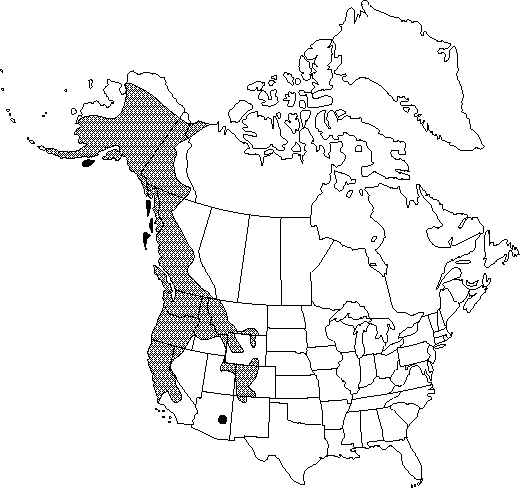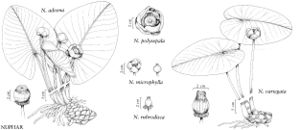Nuphar polysepala
Trans. Acad. Sci. St. Louis 2: 282. 1865 (as polysepalum).
Rhizomes 3-8 cm diam. Leaves mostly floating, occasionally emersed or submersed; petiole terete. Leaf blade abaxially and adaxially green, widely ovate, 10-40(-45) × 7-30 cm, ca. 1.2-1.5 times as long as wide, sinus 1/3-2/3 length of midrib, lobes divergent to overlapping; surfaces glabrous. Flowers 5-10 cm diam.; sepals mostly (6-)9(-12), abaxially green to adaxially yellow, sometimes red-tinged toward base; petals oblong, thick; anthers 3.5-9 mm, slightly shorter than filaments. Fruit green to yellow, cylindric to ovoid, 4-6(-9) × 3.5-6 cm, strongly ribbed, slightly constricted below stigmatic disk; stigmatic disk green, 20-35 mm diam., entire to crenate; stigmatic rays 8-26(-36), linear to lanceolate, terminating within 1(-1.5) mm from margin of disk. Seeds 3.5-5 mm. 2n = 34.
Phenology: Flowering spring (later in north)-summer.
Habitat: Ponds, lakes, and sluggish streams
Elevation: 0-3700 m
Distribution

B.C., N.W.T., Yukon, Alaska, Ariz., Calif., Colo., Idaho, Mont., Nev., N.Mex., Oreg., Utah, Wash., Wyo.
Discussion
Plants intermediate between Nuphar polysepala and N. variegata occur in eastern British Columbia.
Selected References
None.
